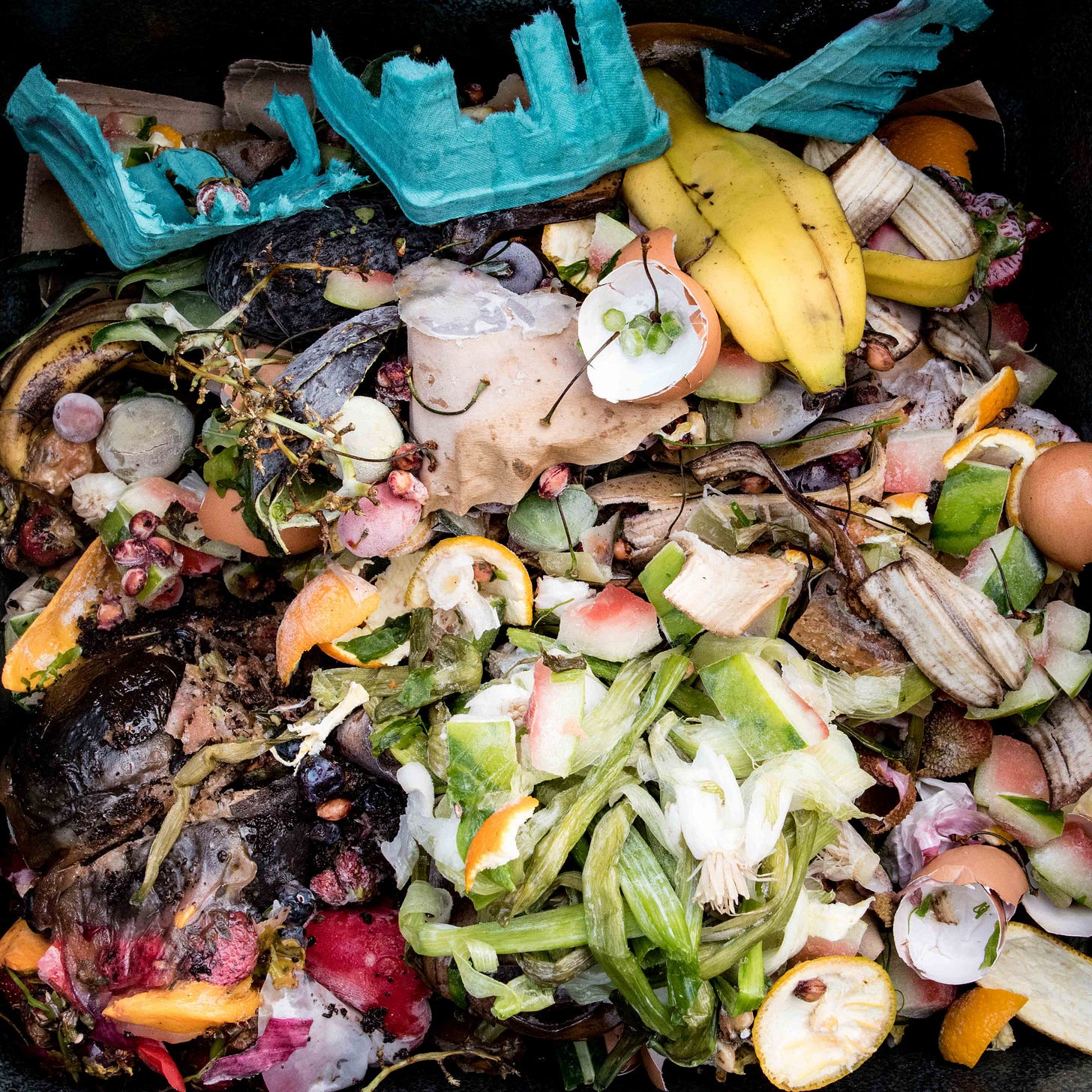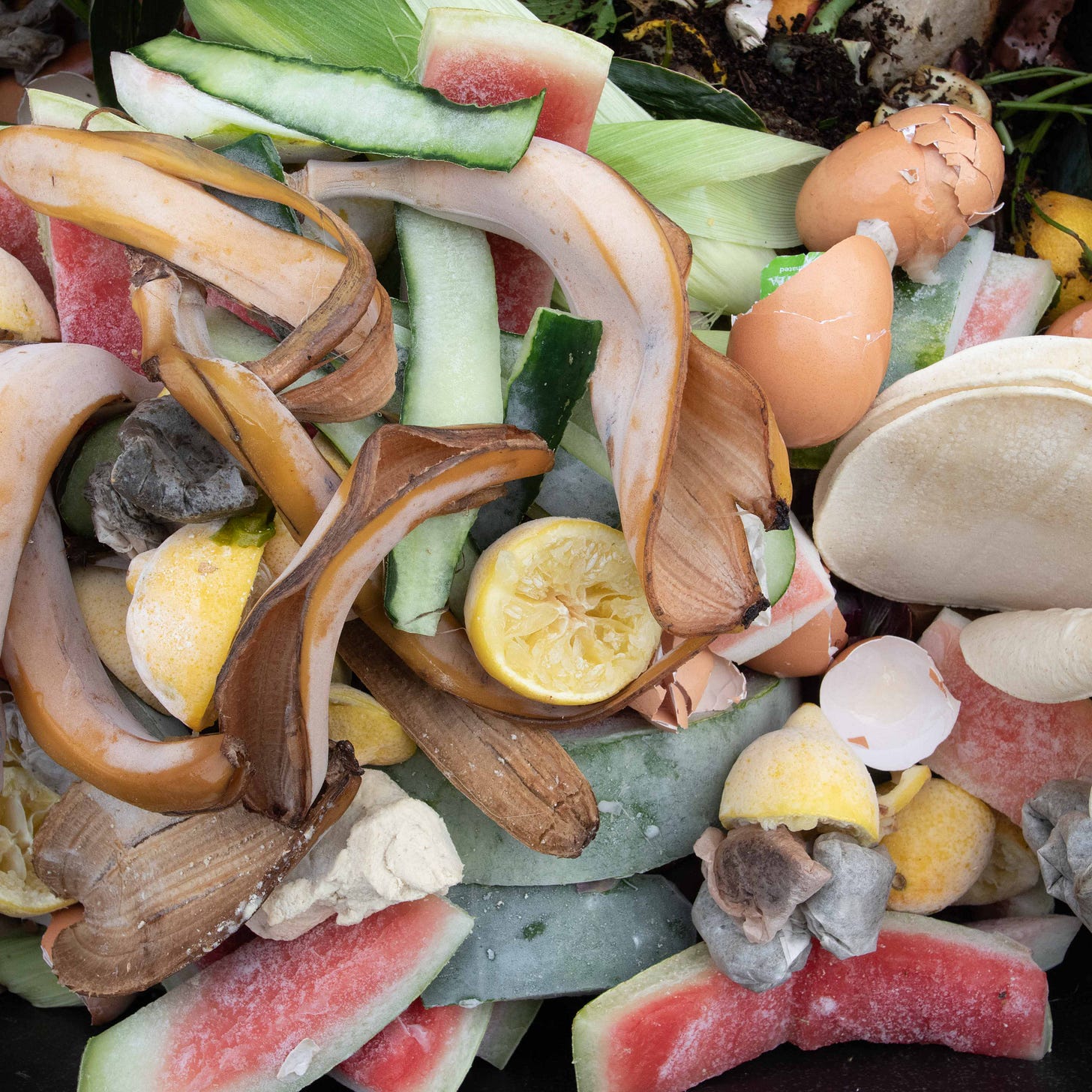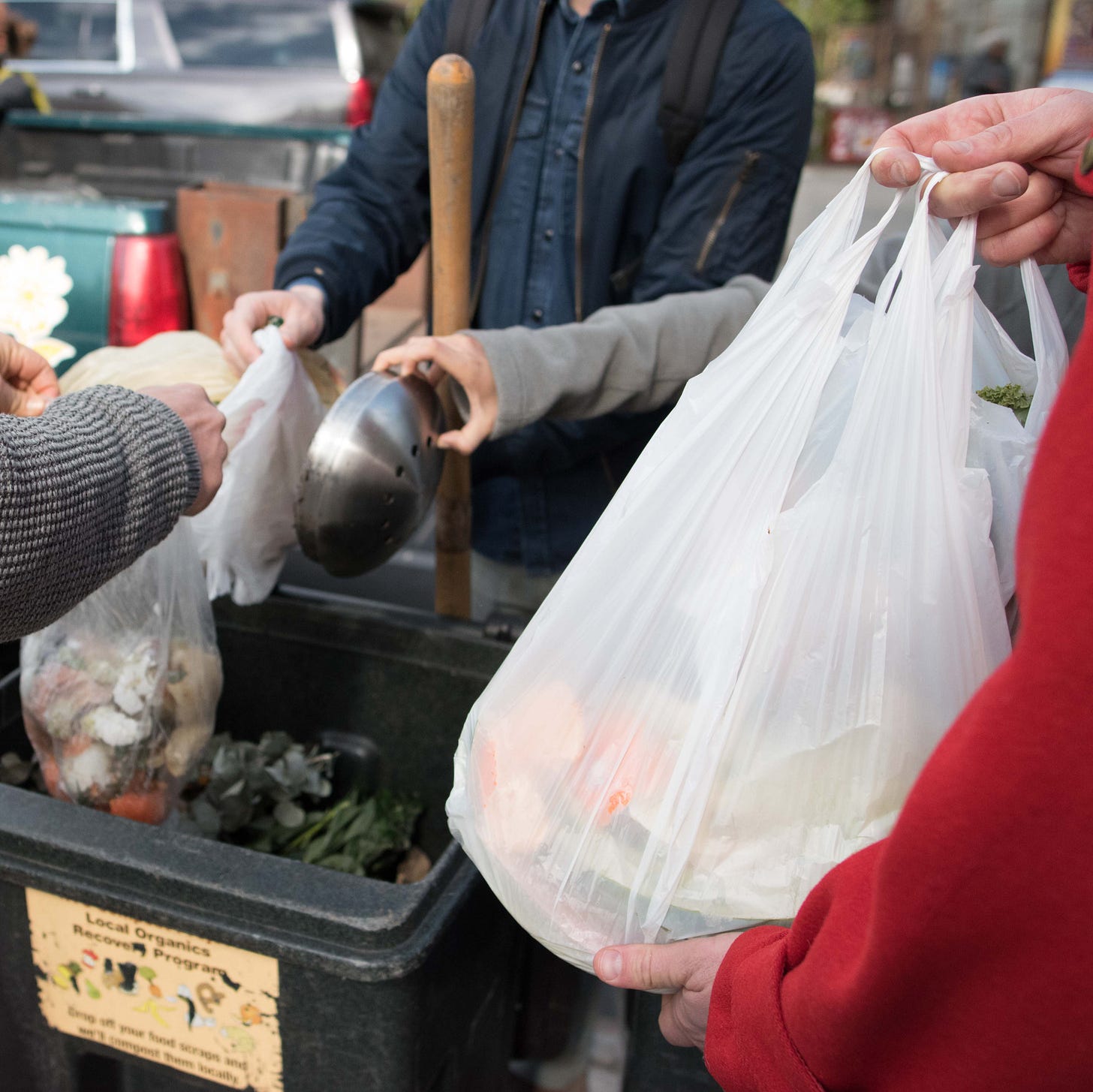Hello dear reader,
Did you know that every day New Yorkers throw 4,000 tons (8,000,000 pounds) of food and yard waste into methane producing landfills?
That’s 1/3 of the total garbage produced each day by the city’s 8.3 million residents in all 5 boroughs. When you do the math, it ends up being 3 pounds of garbage per day, one of which is compostable material.1
What’s a city to do with all that beautiful methane-producing waste?2
Why not compost it? The NYC Compost Project (founded in 1993 & now run by the Department of Sanitation), has funded seven community composting programs that offer over 200 food scrap drop-off sites throughout the city serving 3.5 million people. That food waste (some of which is pictured here) is then composted for use in neighborhood green spaces.3
Here’s the question: How can the city efficiently and effectively provide composting for the remaining 5 million people not currently served?



If you hadn’t already guessed, I have a love affair with compost that started years ago, so it won’t surprise you that in 2017 I went to New York during International Compost Awareness Week (who knew?) to explore the city’s programs (which at that point had been active since 2013).4
What I found was stunning. The colors, shapes and textures of compost in The Big Apple were as enthralling as my own. Before the week was out, I had taken thousands of images!
It was so cool that people kept their compost in the freezer to minimize smell and issues with rodents (we’ve got bears, they have rats - we are so not alone on this planet!). The frozen fruit or vegetables seemed to ‘come to life’ in the heat of the day.
There were a lot of bananas.
Which compost metaphor shall I use?
What is it about this glorious connection between food scraps mixing and mingling to eventually become nutrient rich soil and all those glorious people mixing and mingling at the collection sites?5






“Good morning, good people,” one man said as he approached the bins.
The universal and the specific. The story of 8.3 million people trying to manage their food scraps and the individual narrative of two perfectly good carrots and a delicious looking peach thrown away among spent flowers.
When I returned to the city in July of that year, I visited The Columbia Street Farm, located at 560 Columbia Street in Brooklyn and managed by The Red Hook Initiative, a youth-centered urban agriculture and food justice program.

Located across from Ikea, this 2.75 acre farm was created in 2001 on a former concrete baseball field. 15,000 pounds of produce grow in a 24 inch “raised bed” of compost.
Some of that compost comes from collection bins on site, some comes from the farm itself, and the rest comes from the NYC Department of Sanitation.

Collaboration. Community. Food Security. Food Justice. People coming together for a shared purpose.
E Pluribus Unum. One from many. Many from one.
It is a healthy, muscle-building job to build an 18” protective layer of mulch around the raw materials, ensuring insulation for decomposition as well as to keep rats at bay - - It gets so hot inside these piles that even a rat does not feel welcome.6


So the question remains: How does a city of 8.3 million people not only process its food waste, but also ensure connections to place and to each other?
Mayor Eric Adams has launched a city-wide compost collection system using a “Better Bin” system that will make composting available to all 8.3 million residents of the city. But, as part of recent budget cuts announced in mid November, funding would be eliminated for all community compost collection programs.7
But aren’t the city’s community composting programs stunning examples of hard work, the entrepreneurial spirit, and the re-imagining of people’s relationships to urban spaces?
To thrive, compost necessitates 30 parts carbon-based materials (wood chips, sawdust, cardboard, paper, etc) to 1 part nitrogen-based materials (vegetables, fruits and other green stuff). In other words, it has to have a mix of ingredients to generate productive soil (or energy, as the city plans).
For me, it was the power of this mixing and mingling that gave me hope in 2017, a time when our President was demonstrating racism, sexism, homophobia and xenophobia.
Compost reminded me of the power of diversity, community and collaboration
“Good morning, good people.”
If our goal during this time of climate crisis is to ensure individual and collective resilience in the face of uncertainty, does it make sense to eliminate an effective program for cultivating both?
In March 2022, when at the Union Square Greenmarket, a woman said to me: “Composting saved me during Covid. My weekly outings to these bins gave me purpose and made me feel connected to something greater than myself.”
Will the ‘Better Bins’ be able to do the same the next time there is a crisis that isolates us together?
Access is essential.
Diverting that remaining 4,000 tons of compostable waste is essential.
But so too is ensuring diversity of access, entrepreneurial climate action opportunities, and the cultivation of community in as many ways as we possibly can.
There truly is beauty in the mess of it all.
If nothing else, I’m glad that Mayor Adams’ proposal is generating so much conversation and attention. I just wonder, though, if he has spent time looking into any of those bins at all those collection sites.
They are stunning still-lives as well as metaphors for the City that never sleeps.
How could he not want everyone to witness, celebrate and build relationships around such vibrant colors, shapes and textures?
Thank you for sharing your time and this space with me.
With gratitude for you being you,
Lyn
If you know anyone who might enjoy these compost compilations and musings, please do click the button above and see what they think!
And remember to comment with the button below rather than hitting reply. If you choose the latter, I’ll never see any of your delightful words.
This sounds perfectly logical. In our house, we produce at least 10 pounds of compostables per week. Since it’s just two of us right now, that’s about five pounds per week per person or ABOUT one pound per day per person. These are all estimates and usually there’s a lot more than what actually gets recorded. I’m just sayin’ that it sounds perfectly reasonable to produce that much food waste…though the question of how much is waste (and could have been eaten) and how much is legitimately fully utilized food scraps is an entirely different conversation - - and a huge one, at that.
Methane is a problem because it traps more heat in the atmosphere per molecule than carbon dioxide, making it 80 times more harmful than CO2 for 20 years after it is released (United Nations Environment Programme). When in a landfill, if not captured, that methane gas is released into the atmosphere.
This methane production can be harnessed, as the City of NY is currently doing, to produce energy to heat homes. This unfracked natural gas is better than fracked gas, but it is still a polluter.
The best place for compost is back in the soil where it can add nutrients and capture, not release more carbon (Following the Smart Bin to the Last Stop by Clio Chang).
December 4 article in The Columbia Spectator.
International Compost Awareness Week occurs annually, usually the second week in May. In 2024 it will be May 5-11. ICAW was founded by the Compost Council of Canada in 1995. To learn more, visit the Compost Research & Education Foundation.
During that first trip in May 2017 I was in relatively homogeneous neighborhoods, but it’s New York, right? Diversity of all kinds thrive. The varieties of shoes and backpacks were particularly intriguing.
The ideal temperature for a compost pile is between 141 and 155 degrees F. After resting at this temperature for up to a week, it is ready to continue being processed.
Here are a number of articles that give more details about this transition. Columbia Spectator article 12/4/23; Fast Company article 9/29/23. For an in depth description of what happens to the waste in a Better Bin, check out Clio Chang’s article, “Following the Smart Bin Compost Truck to the Last Stop” in Curbed, April 6, 2023.

























